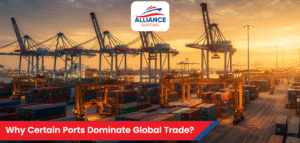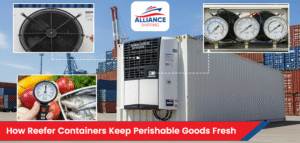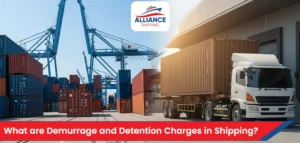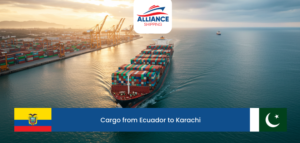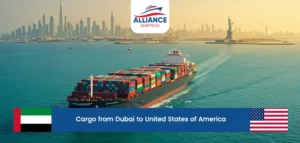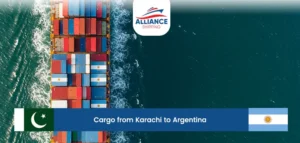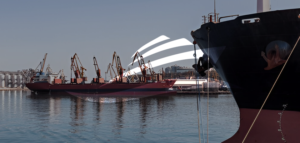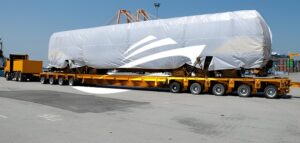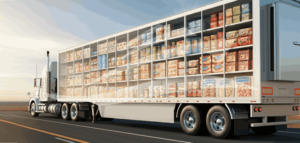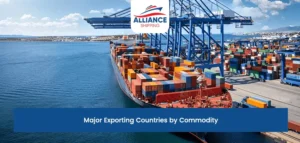If you’ve ever seen cargo ships in photos or videos, they might not seem all that impressive at first. After all, from a distance, they’re just dots moving slowly across endless blue waters.
But when you see these cargo ships from close, it’s a completely different story. These sea ships are absolutely massive. So big that they can carry thousands of different types of containers, different types of vessels, vehicles, or even entire buildings worth of materials at once.
The question comes to mind: how much cargo can a cargo ship carry? And more specifically, how many containers can fit on one ship? Well, the answer isn’t as simple as one number. It depends on the type of cargo ship and its design.
In this article, we’ll break it down for you. We’ll cover:
- What determines a cargo ship’s carrying capacity
- Types of cargo ships and how much cargo/containers they can handle
Cargo Ship Capacity
Before we jump into container numbers, let’s first understand what “cargo ship capacity” means. It will help us understand better. Firstly, it’s not just about how big the ship appears or how many containers it can carry. It’s about two important limits: weight and space.
Even if a ship has room for 20,000 containers, it can’t be overloaded with heavy cargo, such as steel or machinery. Why? Because every ship has a maximum weight limit and volume capacity that ensures it stays safe and balanced on the water.
To calculate the cargo ship capacity, the shipping industry uses specific terms and systems that tell us a ship’s true carrying power.
Deadweight Tonnage (DWT) Explained
The first concept to understand is the Deadweight Tonnage (DWT). It is the total weight a ship can carry. It includes cargo, fuel, freshwater, ballast, crew, passengers, and provisions. When you have this figure, it indicates how much weight the vessel can support without compromising safety or stability.
For example, when a ship is empty of cargo, fuel, and supplies (called a “lightship” condition), its deadweight is zero. As you load it, the DWT increases until it reaches its maximum limit. So even if there’s space for more containers, the ship won’t take them if it’s already at its weight capacity.
Gross Tonnage vs Net Tonnage
Then there are variables such as gross tonnage and net tonnage. Gross tonnage measures the internal volume of the entire ship, including all enclosed spaces. Net tonnage only counts the spaces available for cargo and passengers.
Why do these figures or measurements matter in the shipping industry? Because container weights vary. A ship might physically fit thousands of containers but hit its DWT limit if the cargo is too heavy. Then you can’t add more containers even if the space is there.
Now that you know the basics, let’s get to the exciting part. How many containers and how much cargo different types of ships can carry.
Types Of Cargo Ships And Their Capacities
Not all cargo ships are created equal. Each type is designed for a specific purpose and comes with its own capacity limits, both in terms of weight and the type of cargo or containers it can carry. Let’s take a closer look:
1. Container Ships
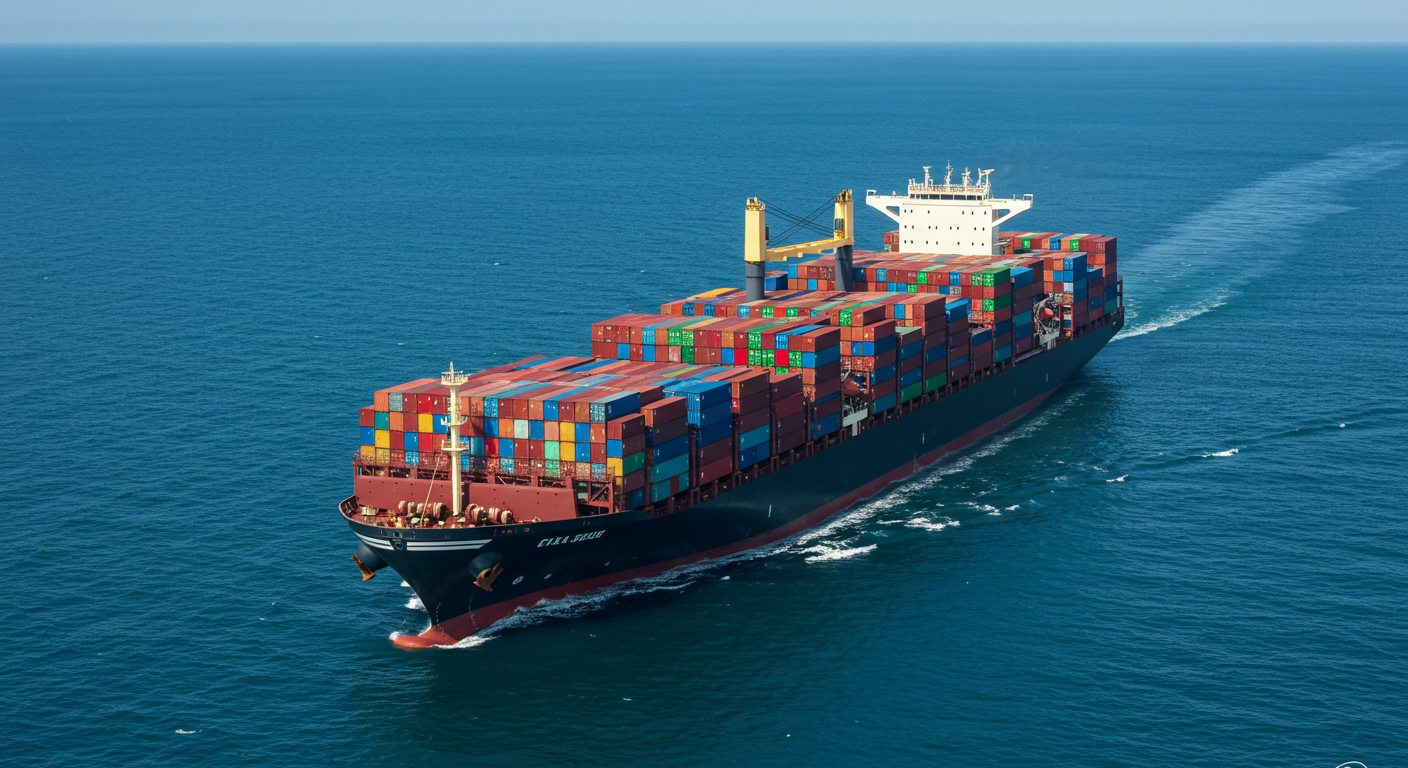
Container ships are the most common type of cargo vessels you’ll see. These are designed to transport standardized shipping containers across the world. These containers, measured in TEUs (Twenty-foot Equivalent Units), make it easy to load, unload, and stack goods of all kinds.
- 1 TEU = 1 standard 20ft container
The capacity of container ships varies greatly depending on their size and class:
| Ship Type | Description | TEU Capacity | Approx. Containers |
| Small Feeder Ships | Serve short routes and smaller ports | 300 – 1,000 TEUs | 300 – 1,000 containers |
| Panamax Ships | Built to fit the Panama Canal | Up to 5,000 TEUs | Up to 5,000 containers |
| Post-Panamax Ships | Too large for the Panama Canal. | 5,000 – 10,000 TEUs | 5,000 – 10,000 containers |
| Ultra Large Container Vessels (ULCVs) | 18,000 – 24,000 containers | 18,000 – 24,000 TEUs | 18,000 – 24,000 containers |
Ever Alot, which belongs to the A-class of vessels, is the largest container ship in the world by TEU capacity, owned by Taiwanese shipping company Evergreen Marine. It can transport approximately 24,000 standard 20-foot containers in a single trip. That’s enough space to move millions of tons of goods (from electronics and clothing to cars and industrial equipment) across continents.
2. Bulk Carrier
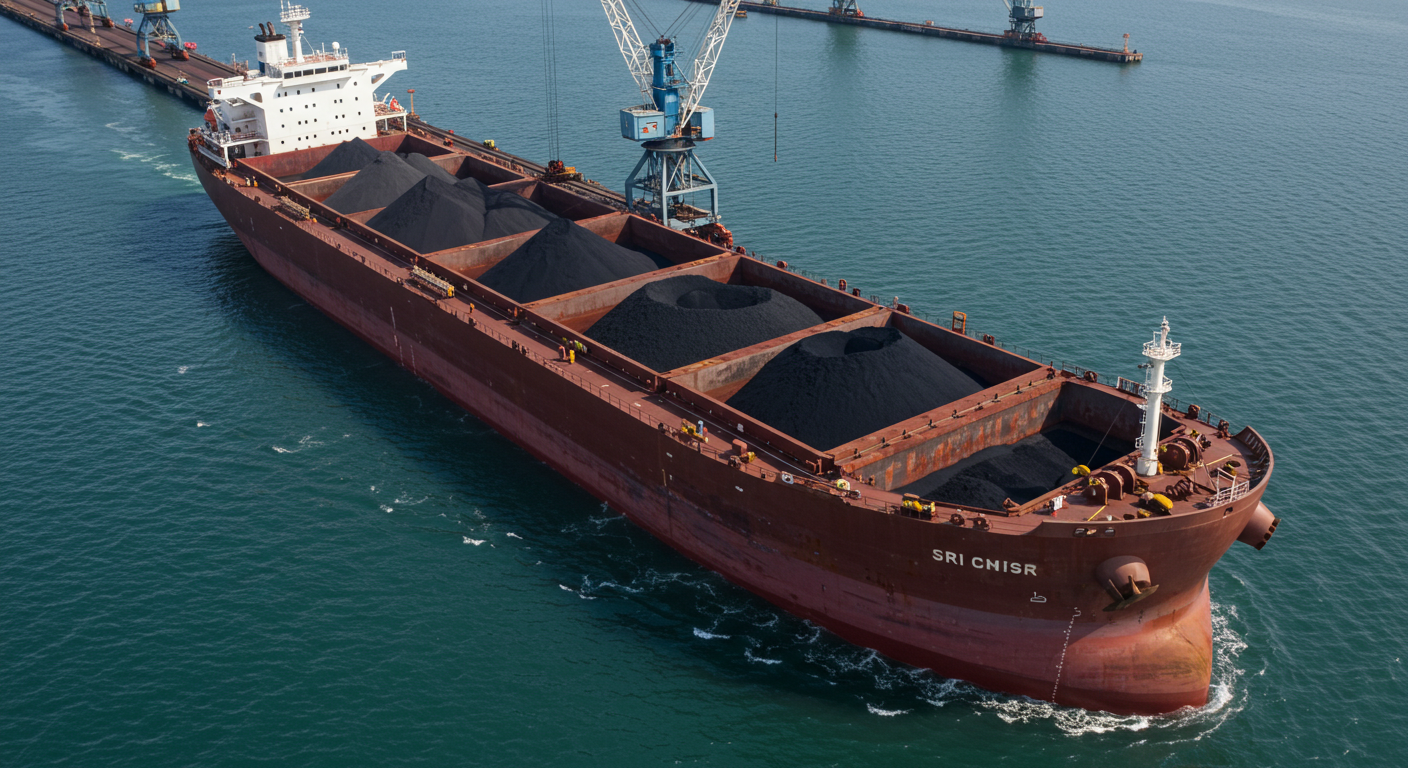
Then we have bulk carriers. These are designed for loose cargo such as coal, grain, ore, and cement. Bulk carriers don’t carry goods in containers but directly in their large cargo holds. Break bulk carrier ships are the backbone of global industries, as they constantly help in shipping raw materials needed for construction, energy, and manufacturing worldwide.
The weight in these ships is measured in Deadweight Tonnage (DWT), which we discussed above as the total weight a ship can safely carry, including cargo, fuel, crew, and provisions.
- Smaller bulk carriers, such as Handysize vessels, typically can carry 10,000 and 40,000 deadweight tonnes (DWT) of cargo.
- Larger vessels, such as Capesize bulkers, can carry more than 100,000 DWT, typically ranging from 100,000 to 200,000 DWT.
3. Oil Tankers

Another type of cargo ships are oil tankers. These are built to carry crude oil or refined petroleum products in bulk across countries. They don’t use containers at all. Instead, the liquid cargo is pumped directly into large storage tanks built within the ship’s hull. These tanks are separated by bulkheads to keep the oil stable and to minimize the risk of spillage.
Medium-sized tankers (Aframax and Suezmax) carry around 80,000 to 120,000 DWT. The ones that are massive oil tankers such as Very Large Crude Carriers (VLCCs) and Ultra Large Crude Carriers (ULCCs) can handle up to 550,000 DWT.
4. Roll-On/Roll-Off (RORO) Ships
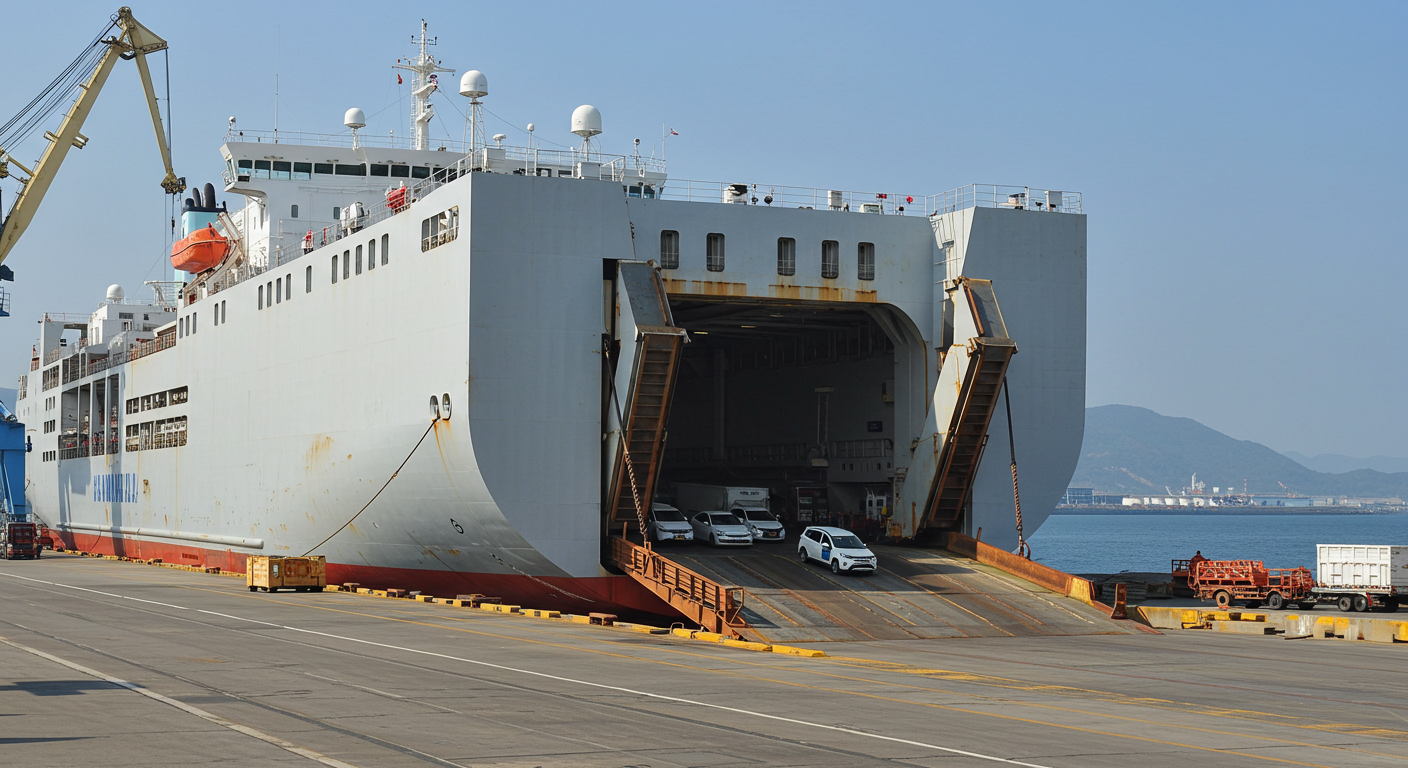
There are also RoRo ships, meaning Roll on and Roll off. These vessels are specifically designed to transport wheeled cargo, including cars, trucks, buses, and heavy machinery.
Now, there are no containers on the RoRo ships. Vehicles are simply driven directly onto the ship using built-in ramps and then parked securely on multiple decks inside the vessel as you can see in the picture too. When they reach their destination, they’re driven off just as easily.
Depending on their size, RORO ships can carry anywhere between 4,000 and 8,000 vehicles at once. Some of the largest RORO vessels are called Pure Car and Truck Carriers (PCTCs). They can carry up to 9,000 vehicles, with a capability of carrying up to 12,800 cars.
5. Reefer Ships
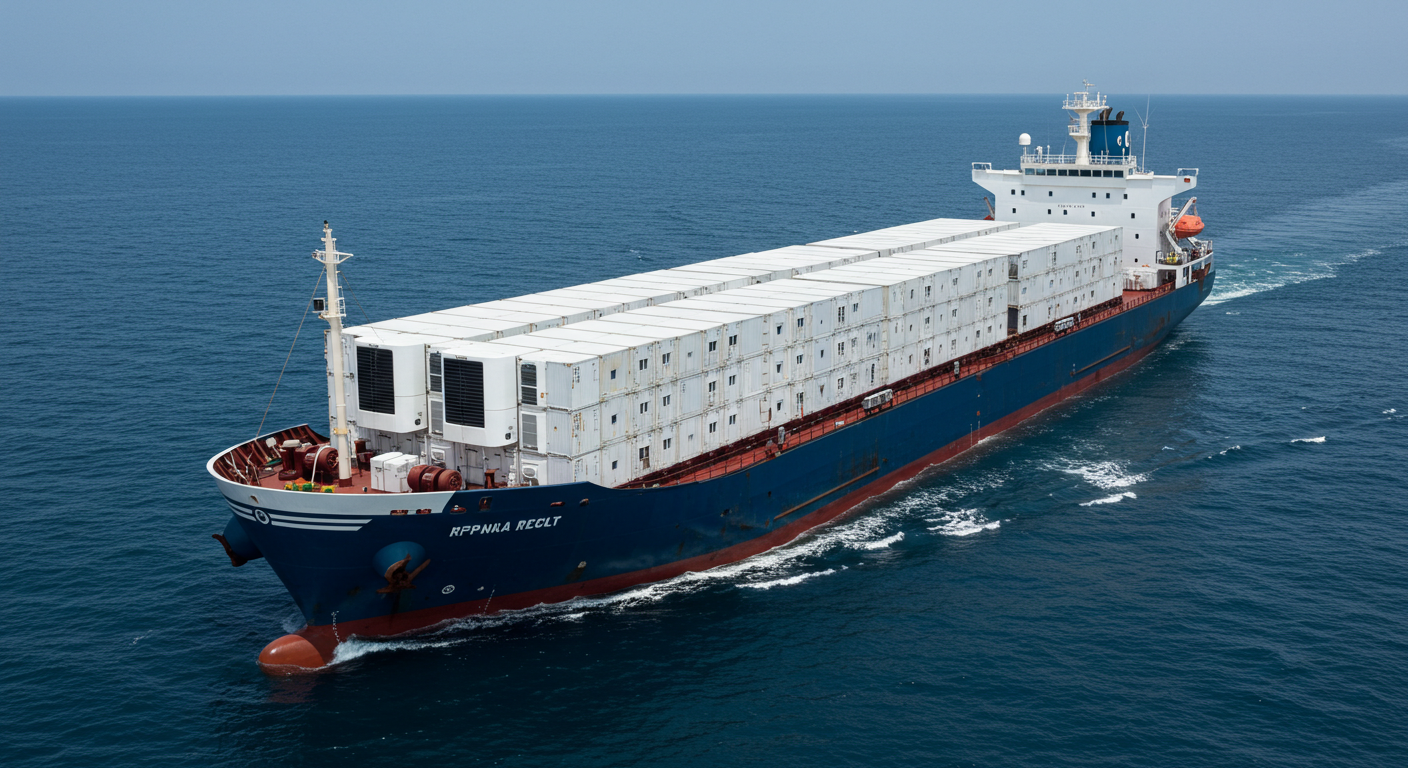
Lastly, there are also reefer ships, short for “refrigerated ship”. These ships are designed to transport temperature-sensitive cargo, including fruits, vegetables, dairy products, meat, seafood, and pharmaceuticals.
They actually carry refrigerated containers that plug into the ship’s power supply to maintain a cold temperature. These containers are loaded and stacked just like on a regular container ship. Smaller reefer ships may carry 1000–2,000 TEUs worth of these refrigerated containers.
World’s Biggest Container Ships
Some of the largest container ships in the world today are part of MSC’s (Mediterranean Shipping Company) fleet, launched in 2023. These include the MSC Irina, MSC Loreto, MSC Michel Cappellini, MSC Mariella, MSC Micol, and MSC Türkiye. Each of these maritime giants can carry approximately 24,346 standard 20-foot containers in a single voyage.
Summary
Now you can understand why 90% of the global trade moves by sea. These massive cargo ships, along with various types of containers, transport large quantities of shipments.
We at Alliance Shipping are also contributing by providing a diverse range of sea cargo services from Dubai. As one of the leading shipping companies in Dubai, with access to Jebel Ali Port, we have a network of carriers and the experience to handle a wide range of cargo needs. Be it container cargo, break bulk items, vehicles, crude oil, and more, we handle it all.
Reach out to us today for your queries.
For Call: +971566495103
For Mail: manager.dxb@theallianceshipping.com



